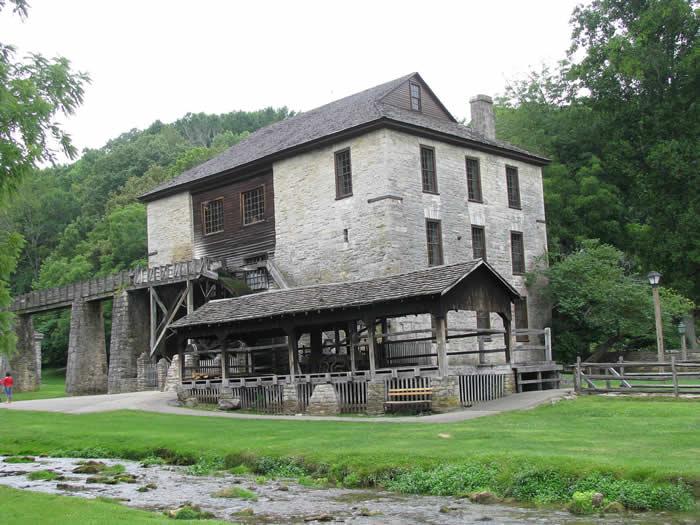
Hamer Mill/Bullett Mill/Spring Mill
Lawrence Co. | Indiana | USA
Watersource: Mill Creek.
Hamer Mill/Bullett Mill/Spring Mill
Take Sr 60 east from Sr 37 at the SW corner of Mitchell. Go about 3 miles east, then enter the Spring Mill State Park on the north side of Sr 60. Follow the signs to the grist mill and 1850’s village.
View Larger Map

The present 1817 grist mill replaced a much smaller 1814 log structure. It is one of the largest mills in southern Indiana. It operated from 1817-1892. By then steam power had replaced water power as the dominant energy.
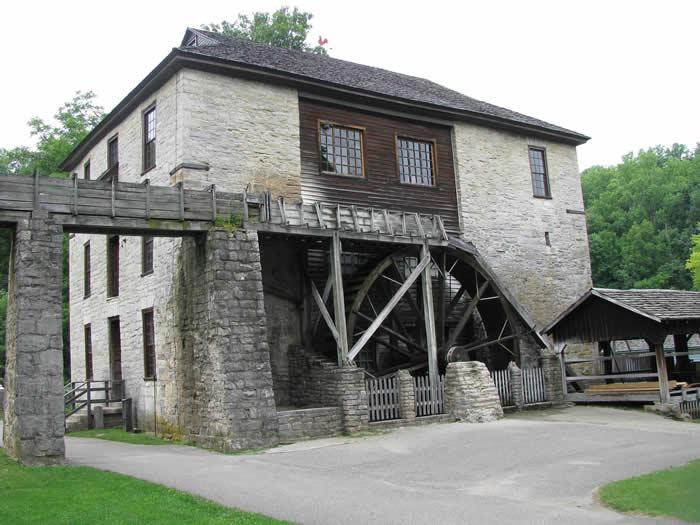
Limestone has played an important part in construction and commerce in Indiana. In 1817, Bullitt's Mill (later Hamer's Mill) was constructed of locally quarried blocks of the St. Louis Limestone. The interior of the mill boasts 150-year-old milling equipment with hand-carved wooden gears, wooden augers and a bull gear attached to an enormous, one-piece, wooden power shaft.
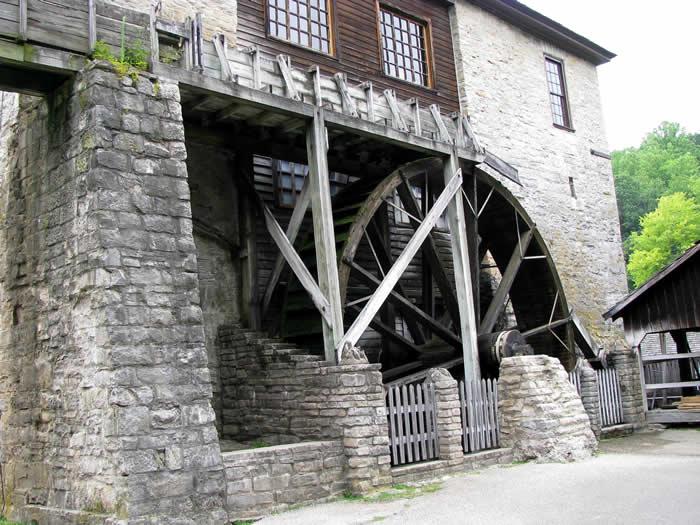
It is ironic that this stone was used, for the world-famous Hoosier building stone, the Salem Limestone, is in the park and later was quarried there. Southern Indiana's Lawrence County is known as Limestone Country. Indiana limestone was a preferred building material, showing up in famous buildings such as the Pentagon, Empire State Building and Lincoln Memorial.
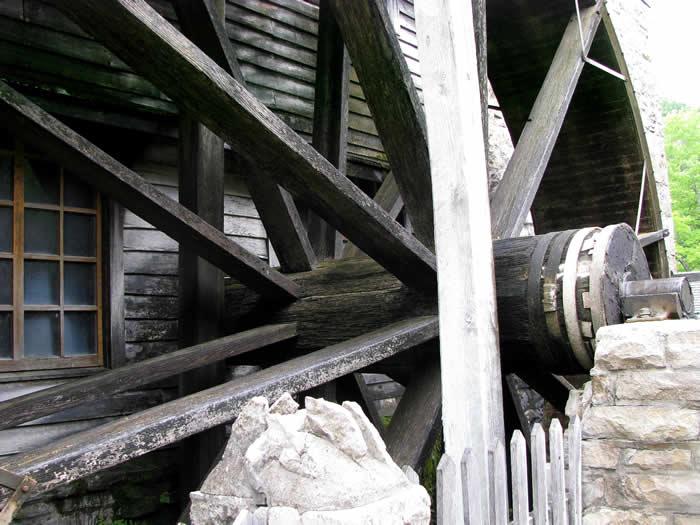
Spring Mill's history suggests that a woolen mill, saw mill, and distillery also made use of this clear running spring water. Centered on Mill Creek that flows from Hamer Cave, the huge grist mill anchors the village. The early 19th century village displays the persistence and ingenuity of hearty Indiana settlers.
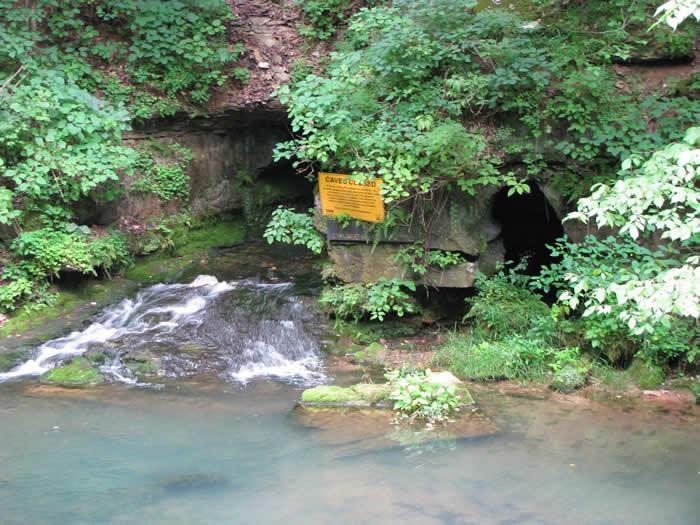
Spring Mill State Park is one of Indiana's finest state parks, nestled into the limestone hills, where Hamer Cave is the chief source of the park's water features. The caves in Spring Mill State Park maintain a constant temperature of 54 degrees throughout the year, and supplied power to the grist mill year around. Samuel Jackson, the mill's original owner, saw the advantage of this natural valley, diverting water to a 15 square foot mill.
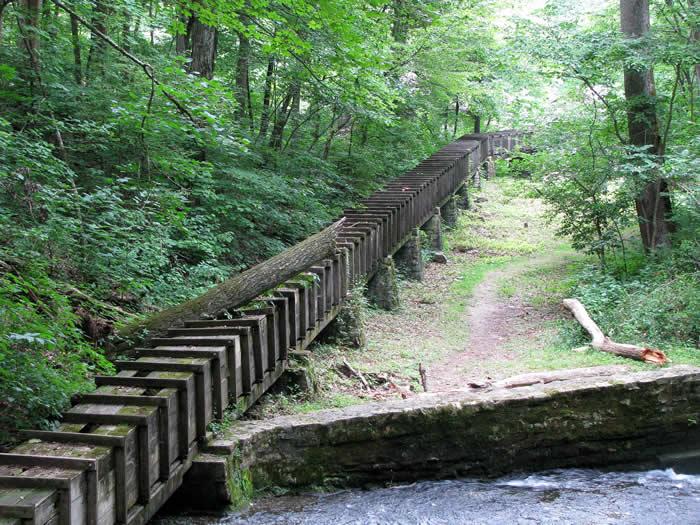
There is a huge overshot waterwheel, with a long wooden flume on stone pillars from a creek from one of the nearby caves which operates the grinding stones and an adjacent up-and-down sawmill. The Wheel: huge, wooden, goes into the 1st floor not the basement as is usual. There is a separate small wheel (undershot?) & turbine to power the sawmill. Water powers this after going over the large wheel.
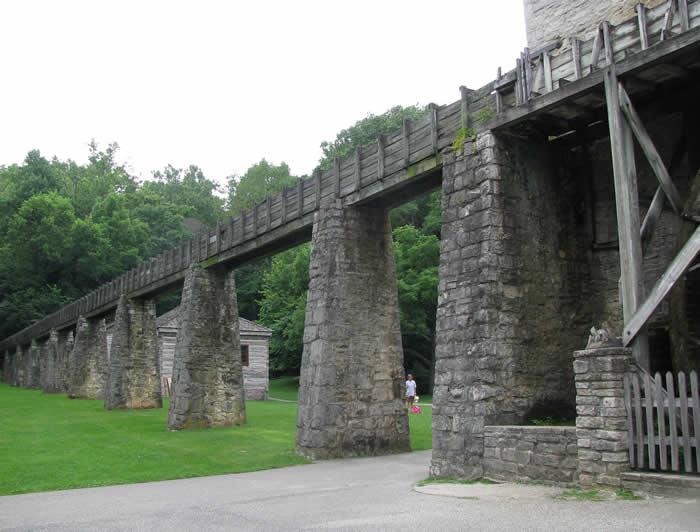
Some time previous to 1815 Sam Jackson—not Samuel—had entered the southwest quarter of section 32; the entry antedates the Lawrence county records. This Jackson was a Canadian, and had seen service in the war of 1812 along the Canadian border. For his services he was given a land warrant, which accounts for the taking up of this land. On the tract is the noted Hamer's cave and the picturesque valley in which the old stone mill stands. During the period of Jackson's ownership there was a com mill erected there, close to where the mill stood, built of logs, and the water was carried from the cave by poplar logs hewn into troughs. William Wright, of Orange county, was the miller.
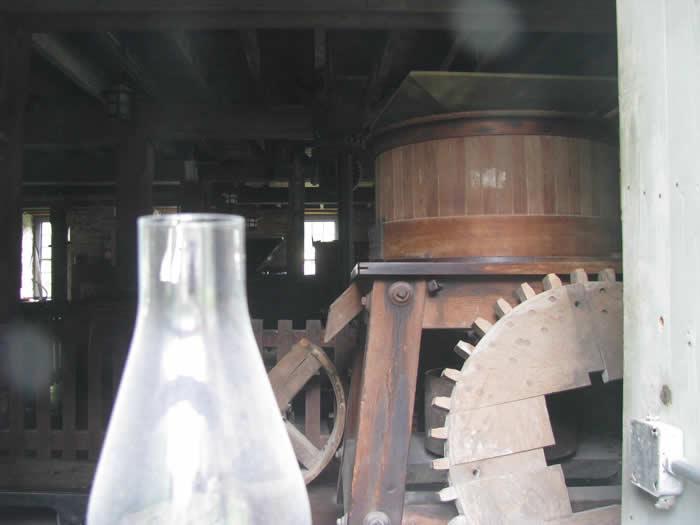
In September 1816, Jackson sold the land to Thomas Bullett and Cuthbert Bullett, and in the spring of 1817 the stone was quarried for the stone mill. In 1818 the mill was finished and was a model for the day. The Bullett's sold the mill in 1823 to the two Montgomery brothers, who improved the property and started a distillery. There had been one distillery previous to this one, owned by William Mallett and Dennis Frost, on Rock Lick, below Tomlinson's lime kiln. In 1825, Hugh Hamar bought the property of the Montgomery boys, paying seven thousand dollars in seven annual payments.
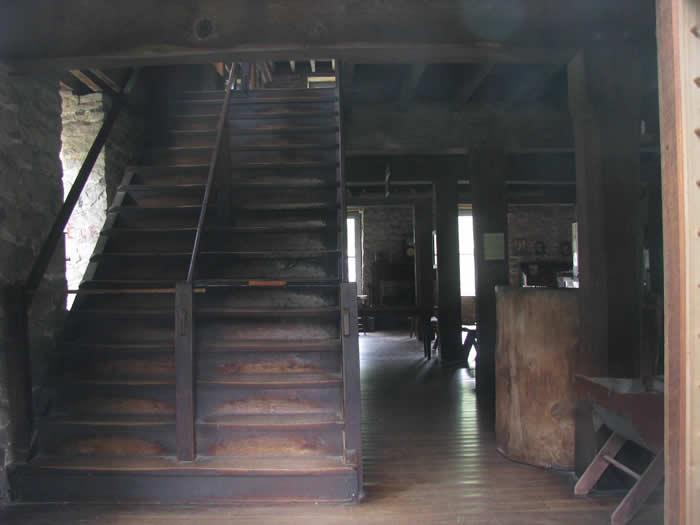
The new owner, Hugh Hamer, re-established the distillery, started a store, and gathered many laboring men about him. He hauled produce to Louisville, built Hat boats at the boat yards on the White river, and shipped flour, whiskey, pork, etc., to New Orleans by water. In 1826, the first post office was established at Mill Springs, and Hugh Hamar was named postmaster. The village reached its peak in the 1850’s at about twenty families, give or take. The mill property descended to Robert B. Hamar, who in turn sold it to Jonathan Turley.
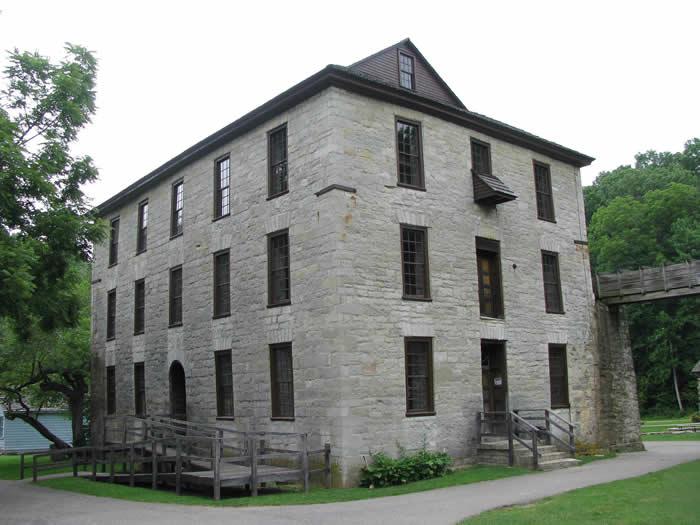
Because the village rapidly declined after the Civil War, the property exchanged hands numerous times, but owners continued to run the distillery and grist mill. The last owner, George Donaldson, returned to Scotland in 1897, and eventually the property reverted to the state. Restoration of the village began in 1928 and the park officially opened in 1930.
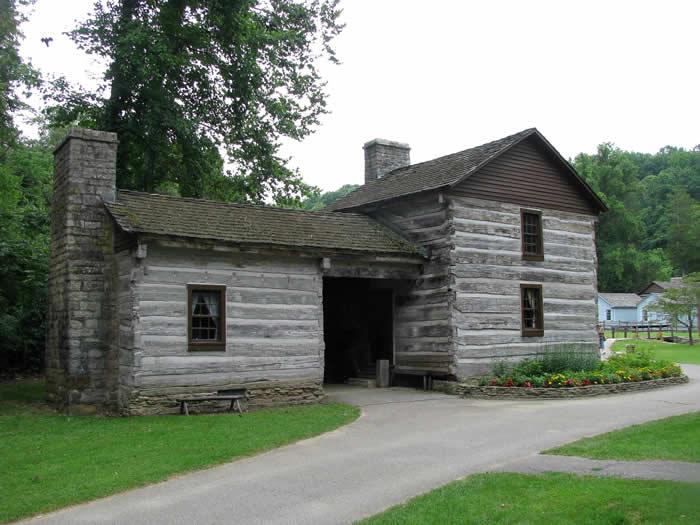
The weaver's house replicated during the 1930's, when the CCC initiated repairs and restored the historic Hoosier village, with numerous log buildings. The weaver's hopuse was full of cloth and yarn, to be spun into strands, then woven on a loom into bolts of cloth. A wooden device, called a "weasel", was used to measure out lengths of yarn. When the desired, preset lengh was attained, the device made a popping sound, thus the phrase "Pop Goes the Weasel".
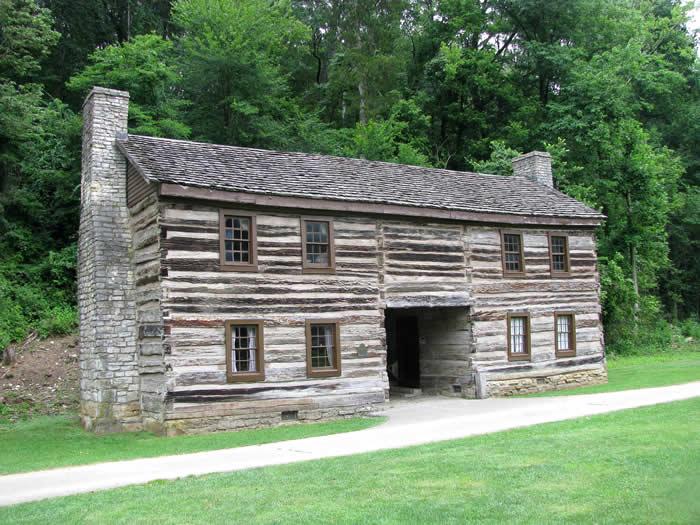
Granny White's House is next on the trail leading to the grist mill. Granny White helped to raise orphans from the community. The double cabin is of the "dog trot" variety. The opening between the two sections allowed for cooling of the house using natural breezes before ari conditioning.
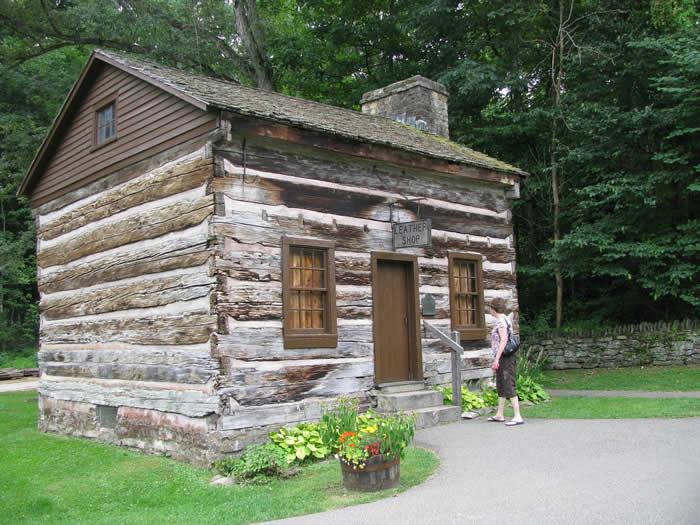
The Leather Shop is situated along the trail between Granny White's dogtrot cabin and the foot-bridge across Mill Creek, at the south end of the mill, as it flows from the spring that flows from Hamer Cave.
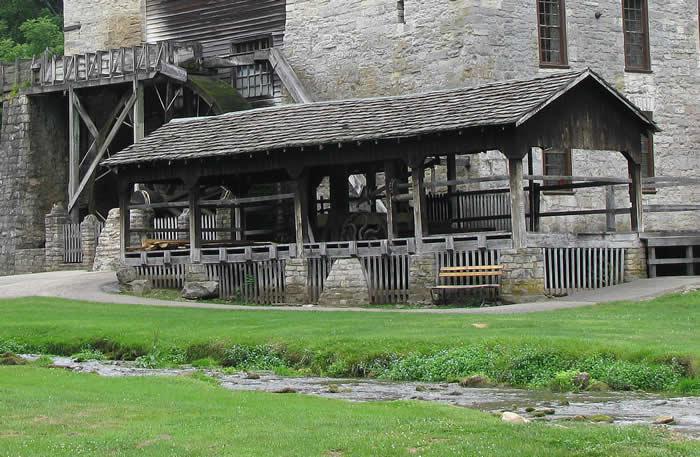
The sawmill, built originally in 1824, is an up-and-down sawmill. It was recreated in the 1930's, when the village was restored. The 19th century grist mill ran day and night in its heyday, as farmers waited up to ten days to grind their corn and wheat into meal. The Hamer brothers had a child care center available for their workers.

The sawmill is powered by the same waters that power the millstones. The saw mill's power is from a small under-shot flutter-waterwheel. When the sawmill powers the up-and-down saw blade, the water stops flowing from the large waterwheel and is directed to drop down onto the smaller wheel.
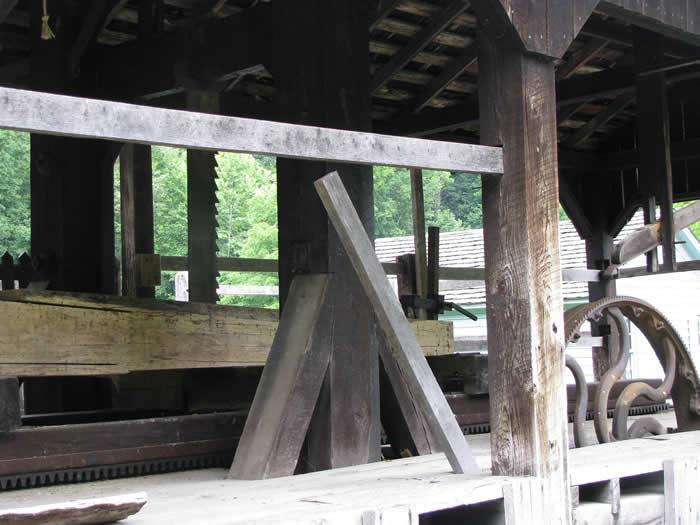
The sawmill is fully functioning and uses the up-and-down saw blade which works with a spacer. The spacer moves the rack and pinion carriage to advance the log. The log is then cut into lumber.
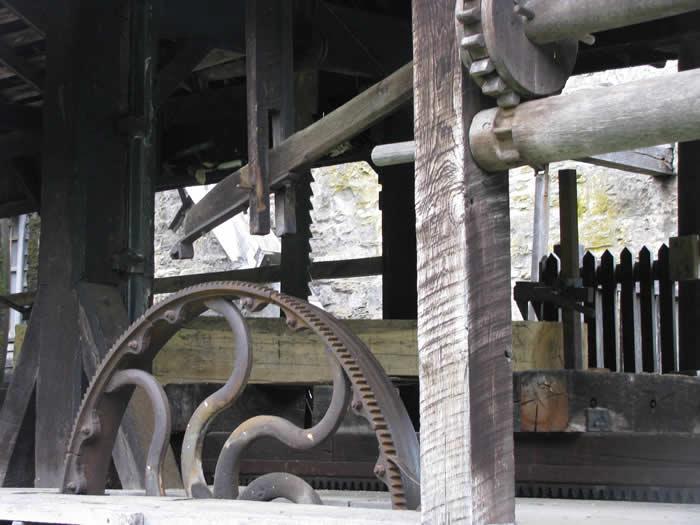
The flywheel transfers power to the up-and-down saw blade. Early sawmills used a pit with a man below and a man above to saw the lumber from the log with physical manpower.
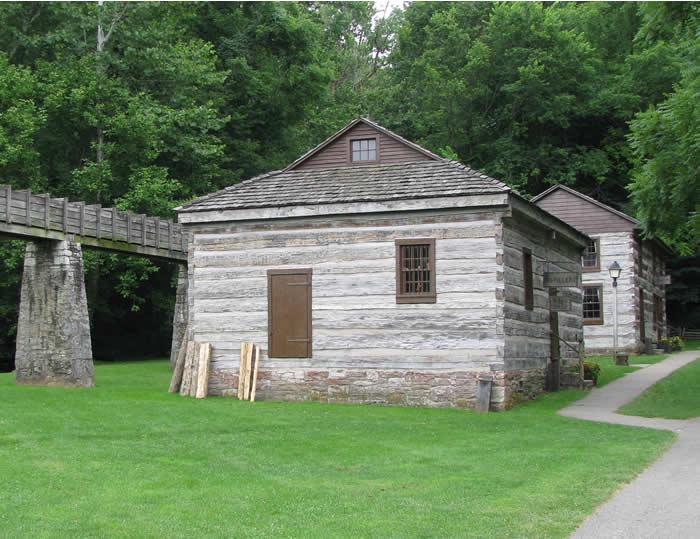
The distillery and tavern behind the distillery. The pottery shop is to the right side of the trail across from the tavern. The flume on the left leads back to the Hamer Cave. The flume and elevated flume carries the spring water about 1/4 mile before arriving at the mill wheel.
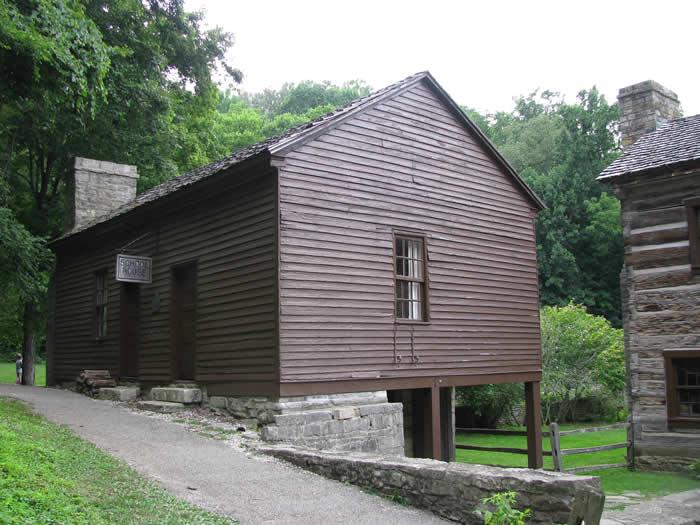
The schoolhouse and the corner of the nearby mill office. The Bullett brothers built the mill office to handle the day-to-day business records and transactions of the mill. The Hamer's later incorporated the small stone structure into the living room of the Upper Residence, but this was rectified when the village and mill were restored in the 1930's by thew Civilian Conservation Corps, giving employment to many struggling, out of work people during the Great Depression.
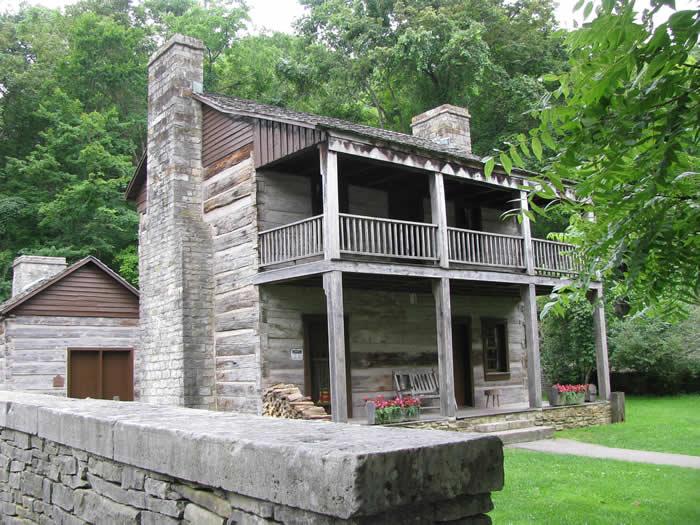
The Upper Residence, the home of one of the Hamer brothers, and mill office behind. The school building is directly behind the residence and not visible in the photo.
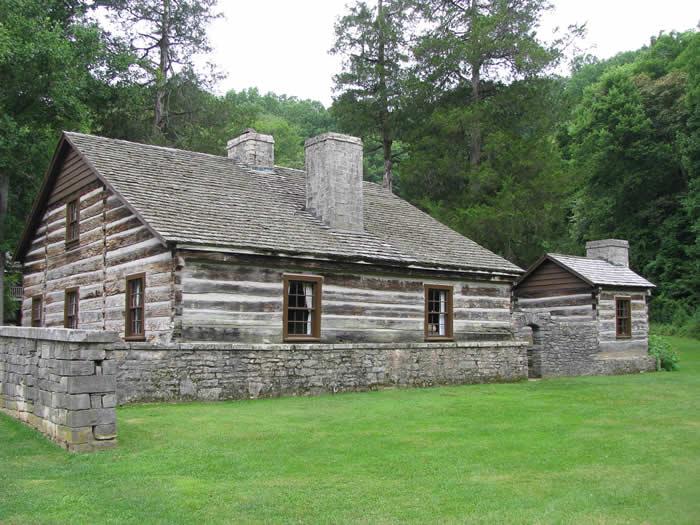
The Lower Residence, home to the other Hamer brother, is directly west of the grist mill and north of the Upper residence.GPS: 38D 44.11'N, 86D 25.60'W ele 568'/173 meters Mitchell Quadrangle
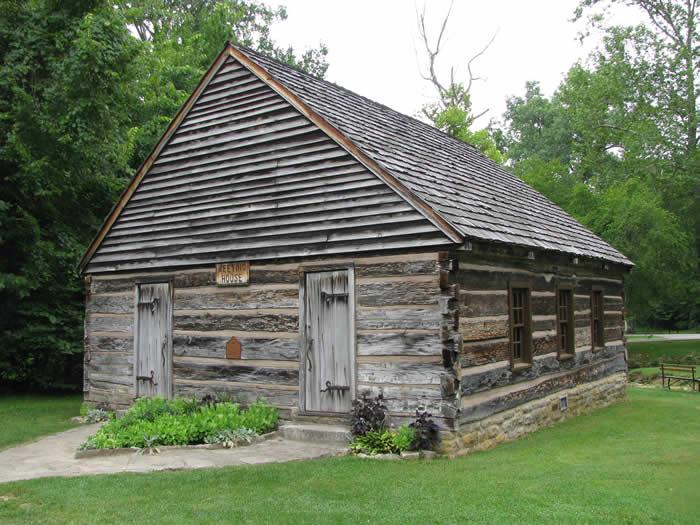
The Meeting House is not an original building of the village. It was built in the 1970's by the Mitchell Ministry because they felt the village should have had a church. Church services are held in the Meeting House even today during parts of the year.
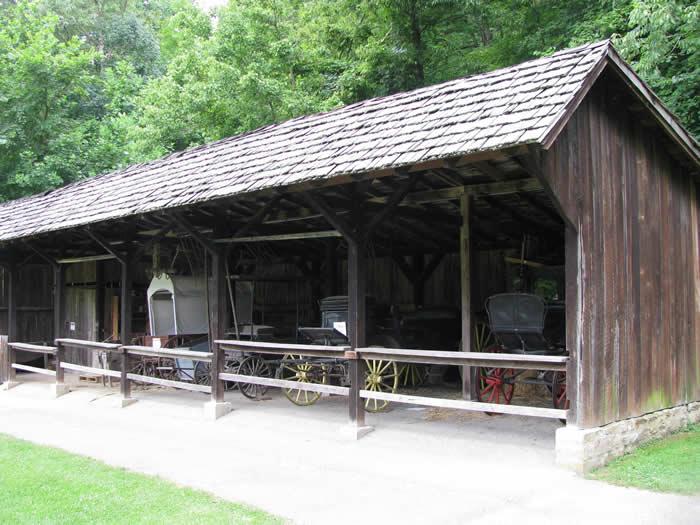
A shed for parking the wagons, carriages and buggies that folks drove to the mill with their grain for grinding. Many times, demand for the miller's talents necessitated spending one or two nights at the mill. This was essentially the town, the community that had grown up around the mill, where one could buy all the goods needed for living day to day.
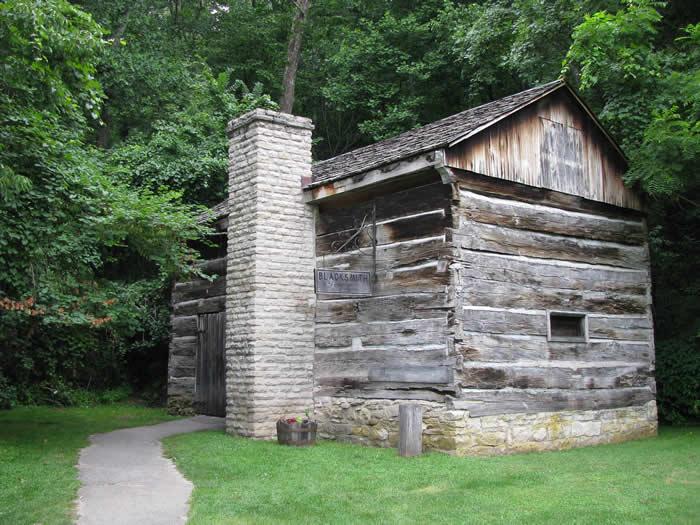
The blacksmith shop was a necessity for the day in the mid-19th century, as all transportation reguired Horse. mules or oxen drawing heavy farm wagons or buckboards and carriages. The livestock needed iron shoes affixed to their hooves and the running stock needed iron bands heat shruck to the rims/outside of the wheels to prolong wear.
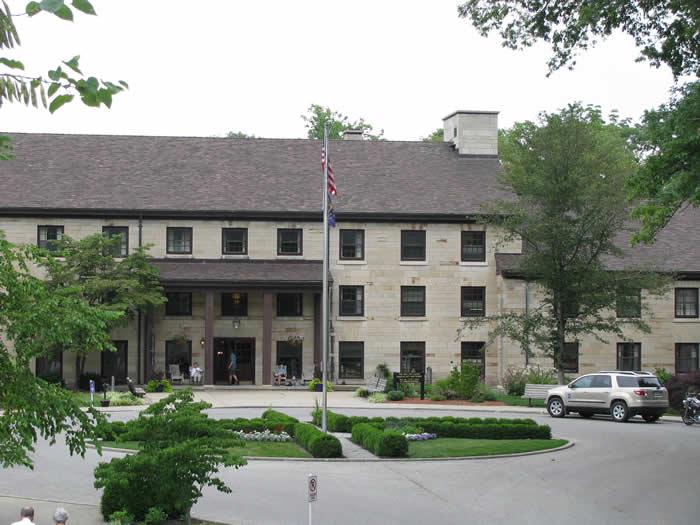
After construction of the Ohio and Mississippi Railroad, which bypassed the settlement, the village gradually declined. Abandoned in the 1880's, it became the property of the Lehigh Cement Co., which gave the site to form part of Spring Mill State Park. The mill was in ruins when the State received Spring Mill. The roof and support structure were weak. The Mill wheel and flume were gone. Intensive research and hard work enabled the mill to be restored to it's former glory.